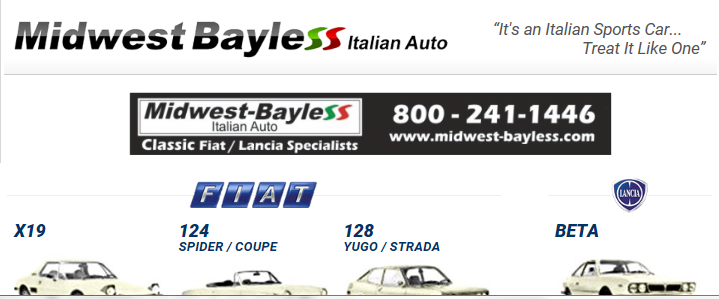- the trailing arms both are bent a tiny bit (really a dent) where someone jacked the car from them
- electricals are all there but will need full diagnostic whenever I get things back together
- I’m considering pulling the engine as I was told that there is a “cracked head” - but suspect maybe blown head gasket. I would feel better about it if I could get all the way into it. Some suggest pulling engine only, others engine and trans together. Your thoughts on that ?
- I’m considering trailering the body to a proper body shop to take care of the outer bits and give it a paint job - budget will tell though
- I’ll have to fix the front seats and do something about the ripped rear plastic window on the rag top. And I’ll have to straighten out the heat levers by the parking brake (all bent up)
- one bumper piston on each end of the car has been depressed a couple of inches. I need to remove the bumpers and see if those can be returned to full extension
Hmmm… that’s all that’s on the current list!
Now, to try to answer the above questions -
The trailing arms being a tiny bit bent? I wouldn't be too concerned providing they're not weakened and they're both the same length (measured between the centres of the bolt holes (not end to end). As these arms locate the rear axle, any
significant discrepancy could cause misalignment of the rear axle leading to 'crabbing' as you go down the road. A little dent, I doubt is going to make any real difference. However, check they're not weakened by rust coming from the inside out (look for any perforations, shake them and see if any rusty dust falls out, tap them lightly with a hammer - the sound will change if you hit a weak spot) and that the rubber bushes are in reasonable condition (the older arms had changeable bushes, later ones iirc, not so).
Electricals - don't give as much trouble as many might suggest, most problems (remember your car is c. 46 years old) are down to poor grounds, poor connections, and being messed with by the 'ignoranti' over the years. Nothing that can't be fixed and usually quite cheaply, more time than money. I certainly wouldn't advise 'fitting a new wiring harness', as others often suggest (they're either part of the ignoranti or trying to sell you a harness or both!).
Possible cracked head? - Does the engine run? If so, what symptoms? Those twincam engines rarely crack a head, but can blow a head gasket as they get older and perhaps have been neglected as regards coolant changes or allowed to overheat (blocked rad, failed thermostat, low coolant level due to a leak, cooling fan not working, can also overheat if pressure cannot build up in the system e.g. due to a leak or failed rad cap etc.). Head gaskets can fail simply due to age - the heating/cooling cycles can cause the aluminum head to 'squirm' on the iron cyl. block, essentially wearing away the sealing (fire) rings around each cylinder _ I used to re-torque the heads at c. 30-40,000 miles, this also tended to avoid oil leaks developing at the front of the head.
The normal check for a failed head gasket or a cracked head would be to perform a cooling system pressure check and a 'sniff' test or use a special liquid that changes color in the presence of combustion gases in the expansion tank - both are best done hot. (difficult to do if the engine doesn't run...). Remove the spark plugs, if one is very clean and the piston top is also devoid of carbon, then this would indicate that coolant has been getting into that cylinder. any drops of water on any of the plugs - lots of things to look out for that might indicate a problem and the possible cause.
Pulling an engine - I try to avoid this if possible. Not a lot of difference between removing the engine only or engine and transmission as a unit - the top 2 bellhousing bolts are a bit difficult to remove in situ, you'll need lots of socket extensions ( the official Fiat factory supplied tool was approx. 3 feet long with a 19mm swivel (flex?) socket on the end) and a suitable engine hoist or similar, ditto removing the starter motor, there's 3 x 13mm headed bolts, iirc, one of which is recessed into the bellhousing but not that difficult. But it's probably easier to refit both as a unit if you can handle this on the hoist you're using (an adjustable 'load-leveller' is useful to have to get the correct angle of approach and then tilt the unit as it's lowered) (some people leave the cyl. head off until they've refitted the' long block' and trans., for this reason, then fit the head)- remember there's a crossmember, that carries the lower suspension arms under the engine, that is not so easy to remove (front suspension coil springs have to be compressed to remove them). With a suitable engine hoist, I'd remove both engine and trans. as a unit.
If you remove and strip the engine, you're inevitably going to find wear, which equals expense...
Re. bodyshop? going to be expensive. Your car doesn't look too bad in the pic you posted. A bit of rust on the passenger front fender. another bit on the rear wheel arch, or was this the best side of the car you showed? Have you tried cleaning and cutting back a section of paint to see if it might polish up?
Or maybe you could do some localised repairs and blow in these areas yourself at home? You might surprise yourself...
Seats? Yes, worth doing, given that you'll be sitting on them. Flattened foam can sometimes be plumped up using a steam generator or re-packed to make them more comfortable, covers are available but don't buy them now, wait until most everything else has been done.
Rag top rear window? Can be replaced on it's own by professionals if the rest of it is in decent condition, could save money by removing the rag top yourself and then bringing it to a prof. to do the window or why not have a go yourself.
Heating control levers? Can probably fix these yourself, new units are available (at a cost), maybe you can source a s/hand unit - any auto breakers/dismantlers near to you or other enthusiasts that may have a store of old parts?
Bumper pistons collapsed? I don't know much about these but I've heard that once collapsed they can't be un-collapsed, they're available but pricey. If I wanted to save money, I think I'd just fabricate a spacer (maybe from a hardwood) and insert this to even up the spacing of the bumper from the body. I believe some people have instead collapsed the other spacer to even up the bumper and move the entire bumper closer to the body which some feel looks better.
Final bit of advice, don't tear into everything all at once, try to fix one area at a time e.g. a section of floor so that you don't start feeling overwhelmed but instead experience a sense of accomplishment and enjoyment when you see your efforts paying off.
Someone recently asked me - what was for me the most important thing about a classic car?
I responded, what do I see and feel when I'm driving it?
So, the only paintwork I can see is maybe a bit of the hood, so the condition of the paintwork or how much it cost isn't important -
The dashboard and instruments - everything working, clean and reminding me of a past time.
The seat - has to be comfortable, most important.
The controls - should work smoothly and as well as they did 'back in the day' i.e. not necessarily perfectly.
And then of course, the sound and the sensations when driving a little piece of motoring history.
But, maybe it's just me that thinks like this?
Q. Why do Irish people talk so much?
A. Because it's the only thing that isn't taxed over here (yet

)







